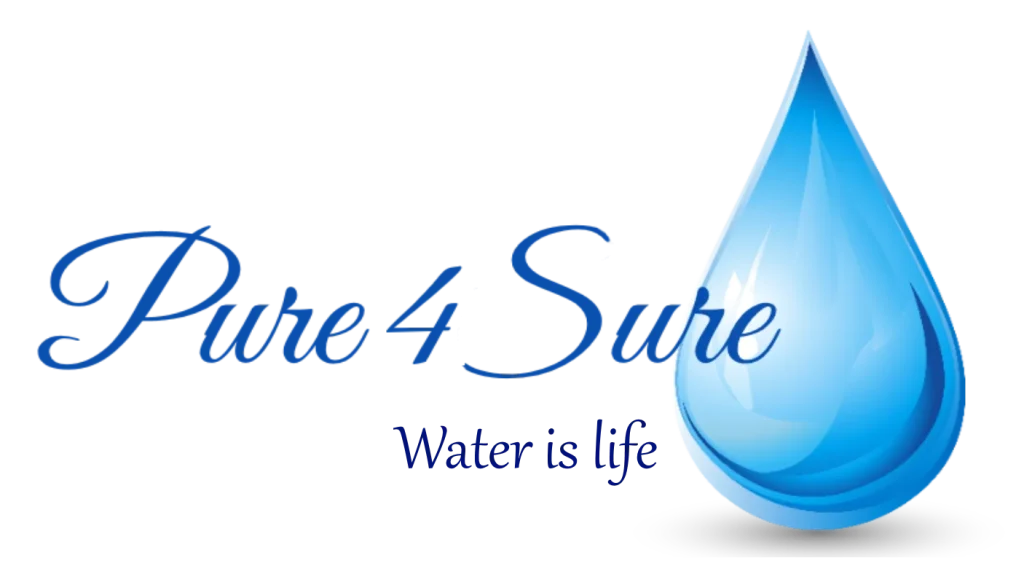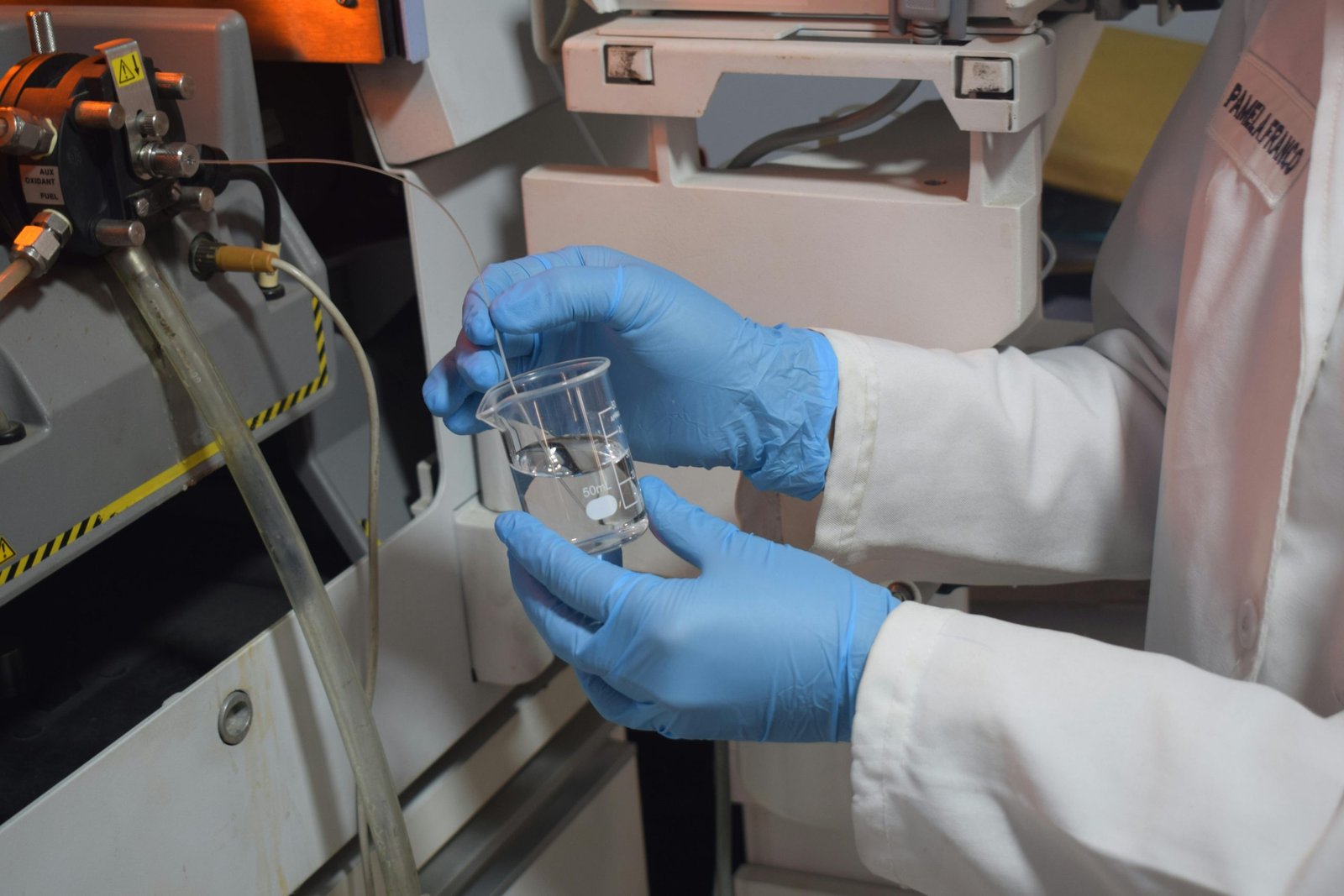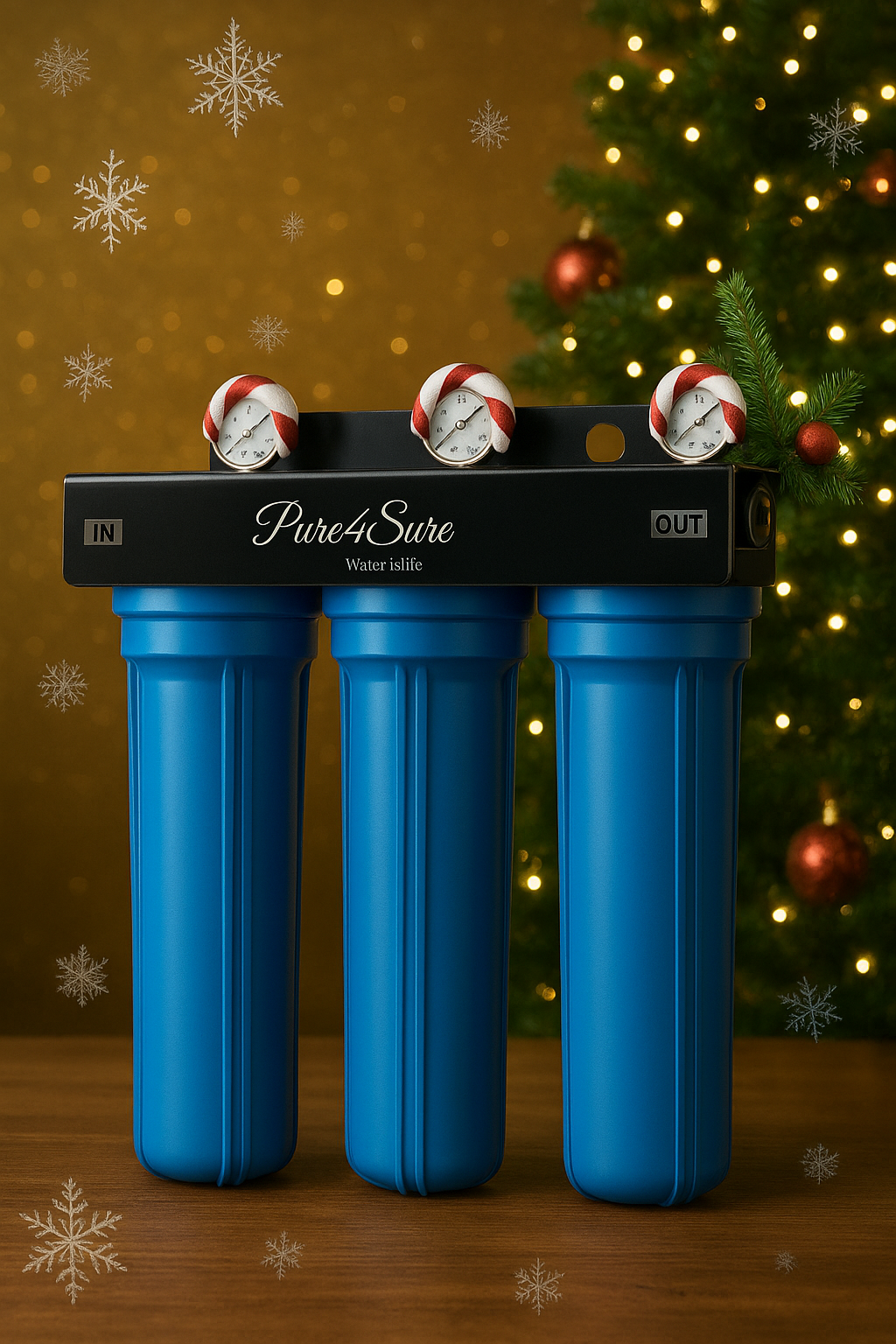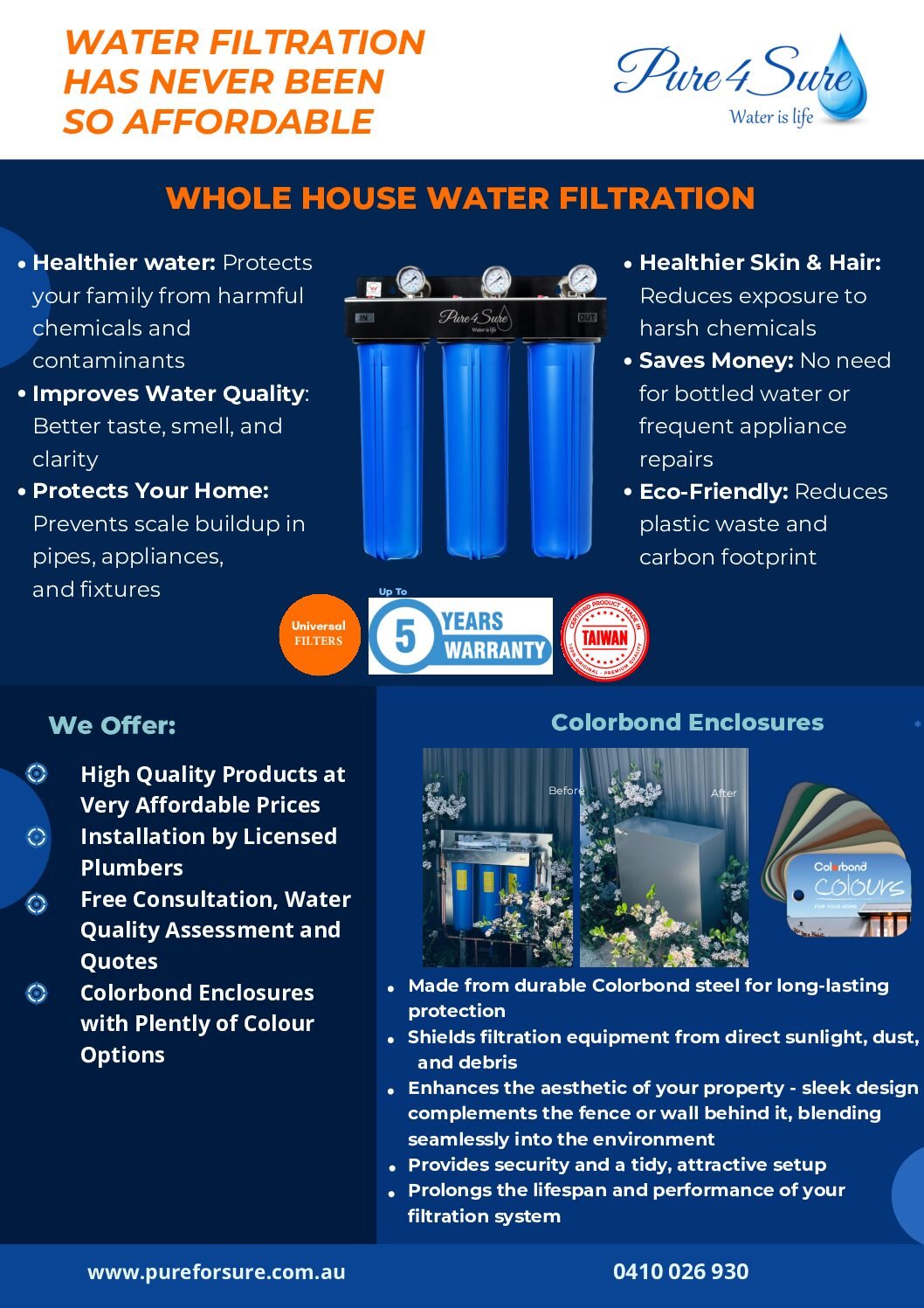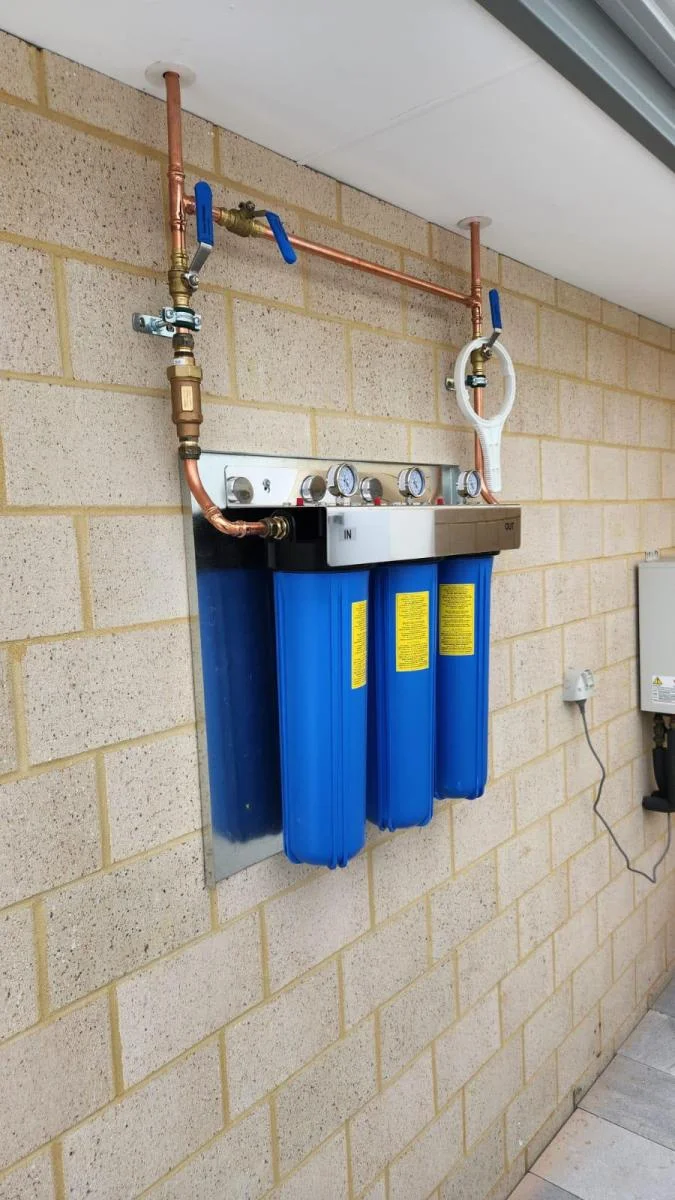PFAS (per- and polyfluoroalkyl substances) are man-made chemicals used since the mid-20th century to make products non-stick and water-resistant [epa.gov]. You’ll find them in everyday items like non-stick cookware (Teflon), waterproof fabrics, grease-resistant food packaging, stain-repellent carpets and firefighting foams [epa.gov].
These chemicals are sometimes called “forever chemicals” because they don’t break down easily in the environment or our bodies. Over time, PFAS can build up (bioaccumulate) in water, soil and people’s blood. Because of this persistence, many studies have linked long-term PFAS exposure to adverse health effects. In short, PFAS can be a concern, so it’s wise to know if they’re in your water and how to limit exposure.
Types of PFAS
“PFAS” actually refers to a large family of chemicals, with nearly 15,000 variations. In drinking water, the most commonly discussed types include perfluorooctane sulfonate (PFOS), perfluorooctanoic acid (PFOA), perfluorohexane sulfonate (PFHxS) and perfluorobutanesulfonic acid (PFBS).
Australia’s national drinking water guidelines, set by the(https://www.nhmrc.gov.au/health-advice/environmental-health/water/PFAS-review), provide health-based guideline values for these chemicals. These values are based on conservative, long-term assumptions to minimize PFAS exposure risk over a lifetime.
For perspective, the latest NHMRC guidelines (in parts per trillion or nanograms per liter) are:
- PFOS – 8 ng/L
- PFHxS – 30 ng/L
- PFOA – 200 ng/L
- PFBS – 1,000 ng/L
These are extremely low concentrations (e.g. one drop of water in 20 Olympic swimming pools). Note that not all PFAS are individually regulated, but any water utility testing will likely check for these key ones. The limit values are set for a lifetime of exposure to be protective of health. It is important to note that while the NHMRC develops these guidelines, their implementation, including monitoring or treatment, falls under the responsibility of each Australian State and Territory. These guidelines are not legally enforceable until adopted into state and territory laws.
How to Find Out if There Are PFAS in Your Water
Finding PFAS requires specialized testing. If your water comes from a public supply, start by asking your water utility or local health agency about PFAS testing. Many water providers now monitor PFAS or can perform a test on request. For example, Sydney Water publishes PFAS monitoring results for its treated drinking water (all currently below guideline levels). Water suppliers in Australia are responsible for monitoring and testing their water sources and are expected to regularly communicate information to the community regarding current risks and testing results.

If you get water from a private well or bore, test it yourself at a certified laboratory. The only reliable way to check for PFAS is to send a sample to an accredited lab using EPA-approved methods. Home test kits exist, but strips or DIY methods cannot accurately detect PFAS. A professional lab can measure PFAS down to parts-per-trillion (ppt) levels. In summary, contact your water supplier or health department for initial information, and if needed, do a PFAS water test via a certified lab to know what you’re dealing with. For private water supplies, the property owner is solely responsible for testing and ensuring the safety of their drinking water.
Safe drinking water is important to everyone
Everyone deserves safe, clean drinking water. In Australia, the(https://www.nhmrc.gov.au/health-advice/environmental-health/water/PFAS-review) define strict safety limits for contaminants including PFAS. These guidelines are based on the latest science to protect health over a lifetime. In 2018 the guidelines first set values for PFOA, PFOS and PFHxS in drinking water, and in 2025 new lower limits (including for PFBS) were added. Water utilities use these values to ensure that treated tap water is safe. For instance, Sydney Water reports that its treatment plants supply water with PFAS levels below the guideline limits. (By contrast, raw water in dams is not subject to the guidelines, which is why monitoring is done on treated water.)
In short, Australia’s official standards and testing programs are designed to keep your tap water safe to drink. It is important to note that the vast majority of PFAS exposure, estimated at up to 90% in Australia, is believed to originate from sources other than drinking water, such as food and household products. Therefore, a broader, cross-sector approach to managing PFAS exposure is crucial.
Steps You Can Take to Reduce Exposure to PFAS in Drinking Water
If PFAS is a concern in your area, there are practical steps you can take at home to lower your family’s exposure:
- Install a certified water filter. Use a filter that specifically reduces PFAS, such as a reverse osmosis (RO) system or an activated carbon filter rated for PFAS removal. These filters can be point-of-entry (whole-house) or point-of-use (under sink or pitcher) depending on your needs. Look for filters certified to NSF/ANSI standards for PFAS reduction.
- Use alternate drinking water sources. If testing shows PFAS above the guideline, consider using bottled water or water from a safer source for drinking and cooking. (Note: a US FDA survey found PFAS in a few bottled water samples, but all at very low levels [fda.gov].) Boiling tap water does not remove PFAS; it may actually concentrate them in the water, making it more dangerous to drink.
- Test regularly. PFAS sources (like new contaminated sites or products) can appear over time. Periodically retest your water or subscribe to updates from local health authorities. For private wells, conduct regular testing for overall water quality (including PFAS) and heed any state-recommended guidelines.
- Follow professional advice. Stay in touch with environmental or health agencies. If you live near an industrial site, fire training ground or military base, local authorities may recommend precautions. EPA advice includes contacting your state environmental or health agency for guidance on PFAS and safe levels.
By proactively filtering your water and using clean sources for drinking and cooking, you can significantly cut down how much PFAS your family ingests.
Limiting Your Exposure to PFAS Can Help Protect Your Health
Because certain PFAS are linked to health risks, reducing your exposure can protect you and your family. PFAS tend to accumulate in the body over time, so even small reductions in daily intake can make a difference in the long run. For example, switching from unfiltered tap water to filtered water for drinking and cooking will lower your PFAS intake. The EPA emphasizes that understanding your water quality and using appropriate filters are among the most important steps you can take to protect your family’s health.
In short, keeping PFAS out of your water helps reduce the burden on your body and may lower the chance of long-term health effects linked to these chemicals.

How Can You Keep Your Family Safe?
Practical measures at home are key to safety. Some recommended steps include:
- Use a Reverse Osmosis (RO) system. RO systems employ high-pressure membranes that remove most PFAS. Studies show RO can reduce over 90% of PFAS (even the shorter-chain types). EPA research indicates RO can be up to 99% effective at removing certain PFAS. Many under-sink RO units (sometimes 4-stage or more) are designed specifically to cut PFAS and other contaminants.
- Add a Granular Activated Carbon (GAC) filter. A quality carbon block or GAC filter can adsorb PFAS from water. EPA research finds GAC can be 100% effective for a time at removing PFAS like PFOA and PFOS. Carbon filters often handle shorter chains less efficiently, but they still significantly reduce levels and improve taste and odor. Using a carbon filter on your drinking tap or fridge is an easy extra safeguard.
- Test your water before and after filtering. Have your untreated and filtered water analyzed to verify your system’s effectiveness. This confirms that PFAS levels have indeed dropped into the safe range.
- Stay informed. Follow local news and agencies for PFAS updates. Subscribe to mail alerts from environmental authorities or sites like NSW Health or the EPA to learn of any changes in guidelines or new filtration technologies.
By installing and maintaining the right filters, and staying proactive about testing and information, you can greatly reduce PFAS in your home water supply and keep your family safer.
Can a Water Filter Remove PFAS?
Yes – but only certain types of filters. According to the EPA, not all treatment methods remove PFAS. Ordinary boiling or basic chlorine treatment will not eliminate PFAS. In fact, boiling water can concentrate PFAS, making the water more dangerous to drink. Ultraviolet (UV) light treatment and standard water softeners are also not effective for removing PFAS.
However, specific filter technologies are very effective: EPA researchers have identified granular activated carbon (GAC) filters, anion exchange resins, and high-pressure membrane filters (like RO) as the best for PFAS removal. In short, a dedicated PFAS filter – not a simple sediment filter or pitcher – is needed. When shopping for a filter, look for NSF/ANSI standards or certifications for PFAS reduction, such as NSF/ANSI 53 and NSF/ANSI 58. For example, a certified RO unit or carbon block filter is proven to cut PFAS, whereas systems like water softeners or UV disinfection have no effect on these chemicals.
Best Water Filters That Remove PFAS
When choosing filters, consider these options:
- Under-Sink Reverse Osmosis Systems: These multi-stage systems (often 3-5 filters plus an RO membrane) provide the strongest PFAS removal. RO units force water through a very fine membrane, rejecting virtually all PFAS. In fact, studies report >90% removal of PFAS by RO. RO systems are often best suited for point-of-use applications due to the waste stream they produce.
- Whole-House Activated Carbon Filters: If you want to protect all tap water, a whole-house GAC system is an option. PureForSure’s 3-Stage Whole House Filtration System uses quality carbon cartridges to treat every gallon entering your home. As water passes slowly through the carbon media, much of the PFAS is adsorbed. Whole-house systems ensure that even showers and laundry are using filtered water. GAC is particularly effective for longer-chain PFAS compounds.
- Countertop or Pitcher Carbon Filters: Smaller point-of-use filters, like carbon pitchers or faucet-mounted blocks, can reduce PFAS too (especially longer-chain ones). Look for filters certified for PFAS reduction. While not as thorough as RO, they improve drinking/cooking water.
What Doesn’t Work: Be aware that boiling water, vitamin C filters, UV filters, and water softeners do not remove PFAS. PFAS are chemically stable and stay in solution. (Even standard home filters that are not carbon-based will not capture these “forever chemicals.”) Therefore, rely only on the methods above for PFAS removal.
Each system has costs (RO systems produce wastewater and need electric pressure, while carbon filters need regular cartridge changes). But investing in the right filter is the most effective way to get PFAS out of your tap water. By combining a certified filter with other precautions, you can ensure your family’s drinking water is as clean and safe as possible.
Frequently Asked Questions
1. What are PFAS and why are they called “forever chemicals”?
PFAS (per- and polyfluoroalkyl substances) are synthetic chemicals used in products like non-stick pans and waterproof fabrics. They’re called “forever chemicals” because they don’t break down easily in the environment or human body, making them highly persistent.
2. Are PFAS found in Australian tap water?
Yes, PFAS can be present in Australian tap water, especially near industrial or firefighting sites. However, most water utilities like Sydney Water regularly test for PFAS and report levels below national guidelines set by NHMRC.
3. How can I test my water for PFAS?
Contact your local water supplier or health department first. If you use a private well, you’ll need to send a water sample to a certified laboratory that uses EPA-approved methods for PFAS testing. Home test kits are not accurate for detecting PFAS.
4. Can boiling tap water remove PFAS?
No, boiling water does not remove PFAS. In fact, it may concentrate PFAS levels, making the water more dangerous to drink. Only specialized filtration systems can effectively reduce PFAS.
5. What types of water filters remove PFAS?
Filters that can reduce PFAS include:
- Reverse Osmosis (RO) systems
- Granular Activated Carbon (GAC) filters
- Anion Exchange Resins
Look for filters certified to NSF/ANSI 53 or 58 standards for PFAS reduction.
6. Do all carbon filters remove PFAS?
Not all carbon filters are equally effective. High-quality carbon block or GAC filters designed and certified for PFAS removal can significantly reduce long-chain PFAS like PFOA and PFOS. Check for NSF/ANSI certification on the filter.
7. How often should I test for PFAS in private well water?
It’s recommended to test your well water annually or whenever there’s nearby industrial activity or a known PFAS source. Retesting after installing a filter ensures your system is working effectively.
8. Is bottled water free from PFAS?
Some bottled waters may contain low levels of PFAS, but most are within safe limits. For guaranteed safety, choose brands that publish PFAS testing results or use water from verified low-risk sources.
